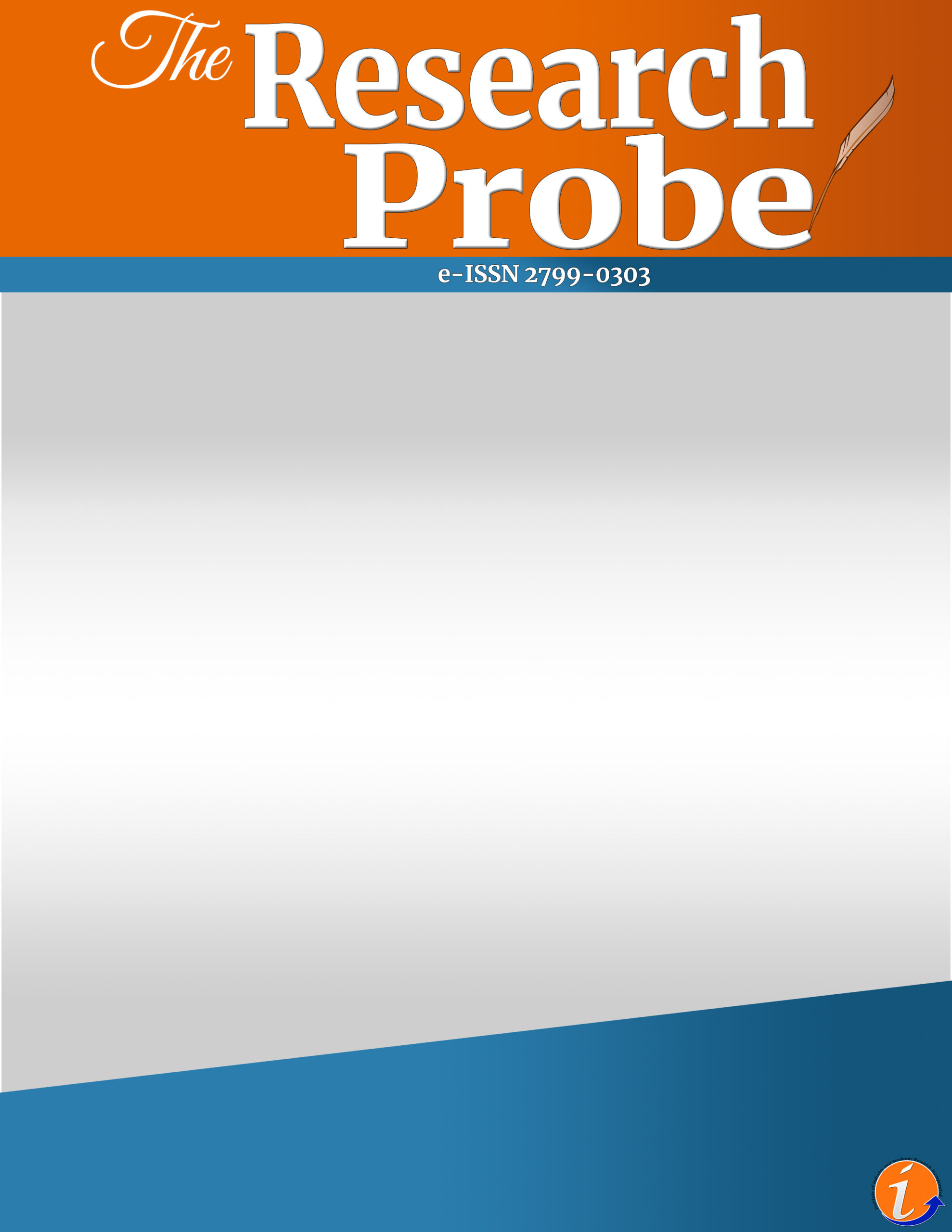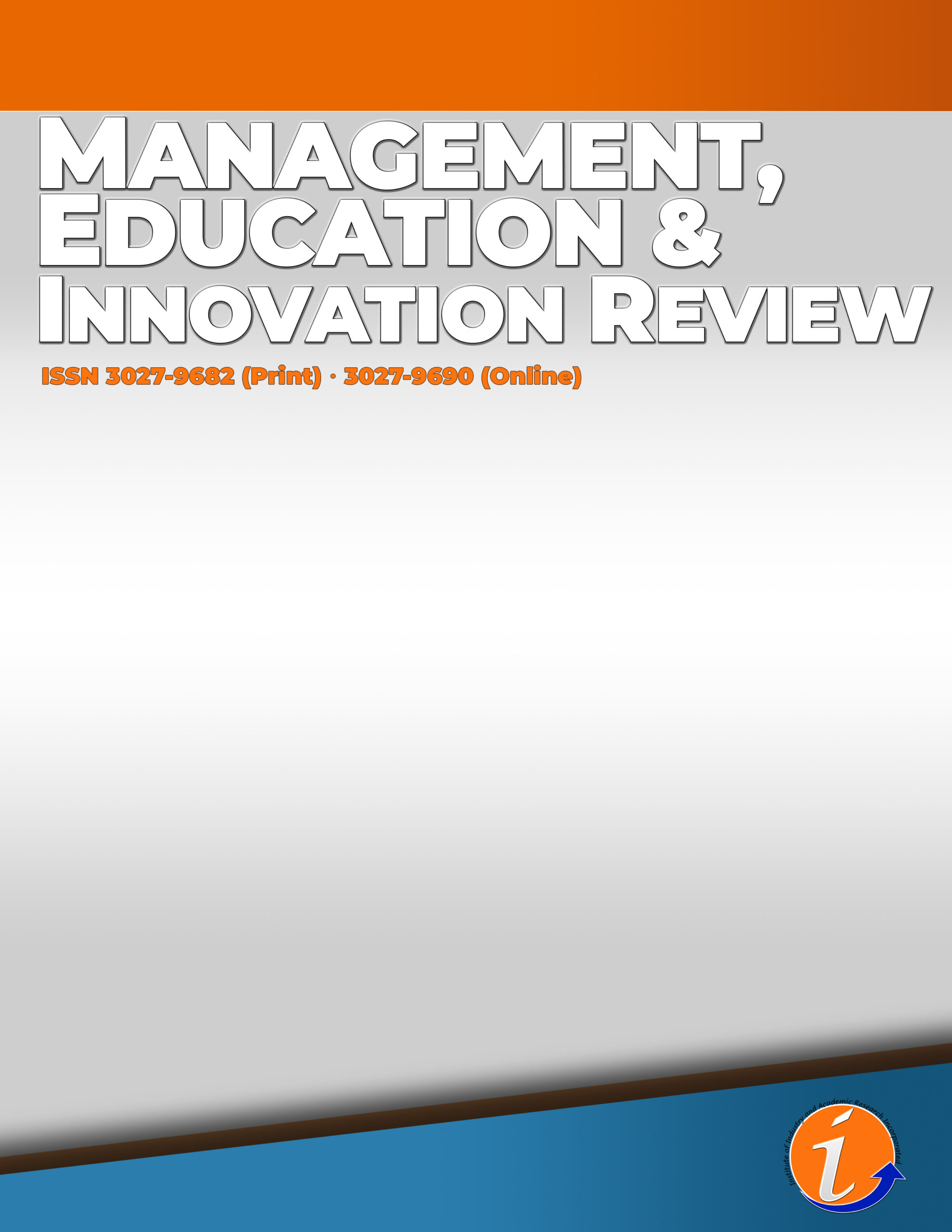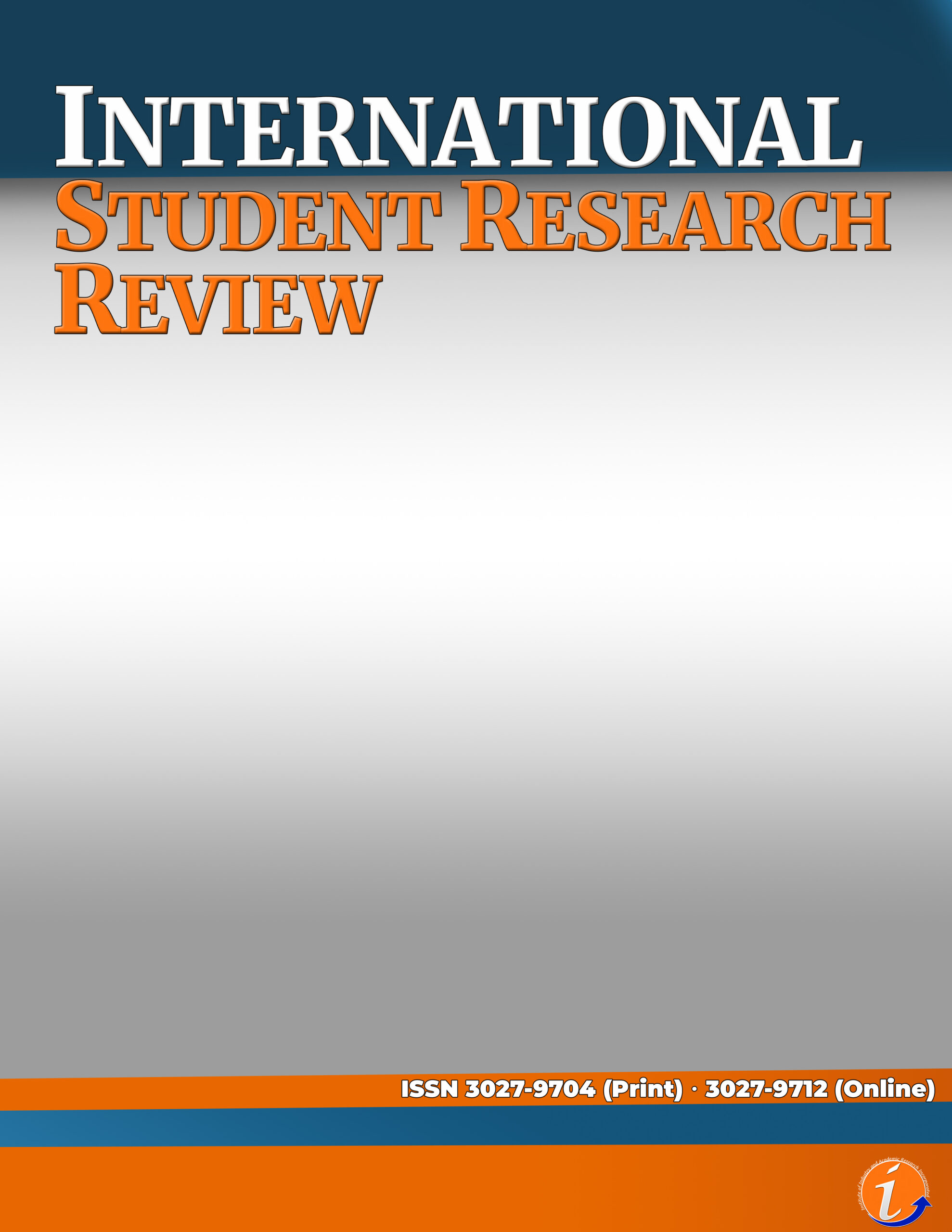Abstract
Employee participation is when a person puts his or her brain, heart, and hands into their work and organization. Employee engagement has consequently gained traction in management circles. This study aims to determine the mediating effect of employee engagement on its drivers and employee job performance. The identified research gap is the lack of empirical evidence of the mediating effect of employee engagement on the relationship between its drivers such as leadership and work life balance and the consequence on employee job performance. Using a quantitative study, this empirical research gap was bridged in the apparel sector in Sri Lanka. The unit of analysis is individual and the sample size is 100. This cross-sectional study was done in a non-contrived setting with the minimal researcher interference. The structural model highlighted the work-life balance’s significant impact on employee engagement and employee job performance, with employee engagement positively affecting employee job performance. While leadership had no clear relationship; further exploration is needed. The mediation analysis confirmed employee engagement’s mediating role between work-life balance and employee job performance, offering actionable insights for enhancing employee job performance. The study was limited to the apparel sector in Sri Lanka. Due to the time constraint this study was also limited to a cross-sectional study.
Keywords: employee engagement, leadership, work life balance, employee job performance
References
Alam, J., Mendelson, M., Ibn Boamah, M., & Gauthier, M. (2022). Exploring the antecedents of employee engagement. International Journal of Organizational Analysis. 31(6), 2017-2030. https://doi.org/10.1108/IJOA-09-2020-2433
Anitha, J. (2014). Determinants of employee engagement and their impact on employee performance. International Journal of Productivity and Performance Management, 63(3), 308-323.
Arulrajah, A. A., & Opatha, H. H. D. N. P. (2012). An exploratory study on the personal qualities/Characteristics expected by the organisations for key HRM jobs in Sri Lanka. Sri Lankan Journal of Human Resource Management, 3(1), 32-48. https://doi.org/10.4038/sljhrm.v3i1.5096
Ayar, D., Karaman, M. A., & Karaman, R. (2022). Work-life balance and mental health needs of health professionals during COVID-19 pandemic in Turkey. International Journal of Mental Health and Addiction, 1-17.
Baumruk, R. (2006). Why managers are crucial to increasing engagement: Identifying steps managers can take to engage their workforce. Strategic HR Review, 5(2), 24-27.
Bernadin, H. J., & Russel, J. E. (1993). Human resource management. International edition, Singapura: McGraw Hill, Inc.
Borman, W. C., & Motowidlo, S. M. (1993). Expanding the criterion domain to include elements of contextual performance. Psychology Faculty Publications. 1111. https://digitalcommons.usf.edu/psy_facpub/1111
Burch, T. C., & Guarana, C. L. (2014). The comparative influences of transformational leadership and leader–member exchange on follower engagement. Journal of leadership studies, 8(3), 6-25.
Dissanayaka, N. M. N. P., & Hussain Ali, M. A. M. (2013). Impact of work life balance on employees performance: an empirical study on seven apparel organizations in Sri Lanka. Proceedings of the Third International Symposium
Fidyah, D. N., & Setiawati, T. (2020). Influence of organizational culture and employee engagement on employee performance: job satisfaction as intervening variable. Review of Integrative Business and Economics Research, 9(4), 64-81.
Grawitch, M. J., Gottschalk, M., & Munz, D. C. (2006). The path to a healthy workplace: A critical review linking healthy workplace practices, employee well-being, and organizational improvements. Consulting Psychology Journal: Practice and Research, 58(3), 129.
Greenhaus, J. H., & Powell, G. N. (2003). When work and family collide: Deciding between competing role demands. Organizational behavior and human decision processes, 90(2), 291-303.
Greenhaus, J. H., Collins, K. M., & Shaw, J. D. (2003). The relation between work–family balance and quality of life. Journal of Vocational Behavior, 63, 510-531.
Guest, D. E. (2002). Perspectives on the study of work-life balance. Social Science Information, 41(2), 255-279.
Gurugamage, S. R., Ramanayake, M. N., Iddagoda, A., & Dissanayake, D. H. S. W. (2022). Mediating Role of Employee Engagement on the Relationship between Workplace Spirituality and Employee Job Performance. Three Seas Econ. J, 3, 1-12.
Hameed, A., & Waheed, A. (2011). Employee development and its effect on employee performance a conceptual framework. International journal of business and social science, 2(13), 224-229.
Harrington, B., & Ladge, J. (2009). Present dynamics and future directions for organizations. Organizational dynamics, 38(2), 148-157.
Hughes, R., Ginnett, R. C., & Curphy, G. J. (1993). Leadership. Public Health Nutrition, 12(8), 1029.
Iddagoda, A., Dissanayake, H., & Ranasinghe, L. (2022). Employee engagement system: empirical evidence from the Sri Lankan banking sector. Three Seas Economic Journal, 3(1), 1-11.
Iddagoda, A., Opatha, H. H. P., & Gunawardana, K. (2016). Towards a Conceptualization and an Operationalization of the Construct of Employee Engagement. International Business Research, 9(2).
Iddagoda, Y. A. (2021). Towards an instrument of measuring the construct of leadership by the 10 Cs for employee engagement. Roczniki Nauk Społecznych, 49(3), 81-103.
Iddagoda, Y. A., & Gunawardana, K. D. (2017). Employee Engagement and Perceived Financial Performance: A Serene Insight. International Business Research, 10(12).
Iddagoda, Y. A., & Opatha, H. H. (2020). Relationships and mediating effects of employee engagement: An empirical study of managerial employees of Sri Lankan listed companies. Sage Open, 10(2), 2158244020915905
Kahn, W. A. (1990). Psychological conditions of personal engagement and disengagement at work. Academy of management journal, 33(4), 692-724.
Macey, W. H., & Schneider, B. (2008). The meaning of employee engagement. Industrial and organizational Psychology, 1(1), 3-30.
Mendis, M. D. V. S., & Weerakkody, W. A. S. (2017). The impact of work life balance on employee performance with reference to telecommunication industry in Sri Lanka: a mediation model. Kelaniya Journal of Human Resource Management, 12(1), 72-100.
Opatha, H. H. D. N. P. (2009). Human resource management. Department of HRM, University of Sri Jayewardenepura.
Paracha, M. U., Qamar, A., Mirza, A., Hassan, I. U., & Waqas, H. (2012). Impact of leadership style (transformational & transactional leadership) on employee performance & mediating role of job satisfaction. Study of private school (educator) in Pakistan. Global Journal of Management and Business Research, 12(4), 55-64.
Parker, C. F., Karlsson, C., & Hjerpe, M. (2015). Climate change leaders and followers: Leadership recognition and selection in the UNFCCC negotiations. International Relations, 29(4), 434-454.
Perrin, T. (2007). Global Workforce Study 2007. Online verfügbar unter http://www.towersperrin.com/tp/getwebcachedoc.
Ramanayake, M. N., Gurugamage, S. R., Iddagoda, A., & Dissanayake, D. H. S. W. (2022). Mediating role of employee engagement on the relationship between Green HRM and employee job performance: a study of banking sector. Akademia Zarządzania, 6(2), 155-170
Robertson-Smith, G., & Markwick, C. (2009). Employee engagement: A review of current thinking. Brighton: Institute for Employment studies.
Rosco, J. T. (1975). Fundamental research statistics for the behavioral sciences. Holt, Rinehart & Stone, New York, NY.
Sekaran, U. (2003). Research, Methods for Business, A Skill–Building Approach. Singapore: Jonh Wiley & Sons.
Sekaran, U., & Bougie, R. (2016). Research methods for business: A skill building approach. John wiley & sons.
Sirisena, A. R., & Iddagoda, A. (2022). Employee Engagement and the Facets of its Relationships with Four Constructs: A Study of the COVID-19 Pandemic Era. Academy of Management, 6(1)
Sopian, K., Hidayati, T., & Kusumawardani, A. (2022). Effect of Work-Life Balance on Employee Engagement in Increasing Employee Performance. American Journal of Humanities and Social Sciences Research, 2(6), 156-162.
Susanto, P. C., Syailendra, S., & Suryawan, R. F. (2023). Determination of Motivation and Performance: Analysis of Job Satisfaction, Employee Engagement and Leadership. International Journal of Business and Applied Economics, 2(2), 59-68.
Tharika, S., Iddagoda, A., & Bulińska-Stangrecka, H. (2021). Employee Engagement and its Dynamics: An Empirical Study of an Information Technology Company Sri Lanka. International Journal of Academe and Industry Research, 2(4), 1-15.
Truss, C., Shantz, A., Soane, E., Alfes, K., & Delbridge, R. (2013). Employee engagement, organisational performance and individual well-being: exploring the evidence, developing the theory. The international journal of human resource management, 24(14), 2657-2669.
Vyas, L. (2022). “New normal” at work in a post-COVID world: work–life balance and labor markets. Policy and Society, 41(1), 155-167.
Welch, M. (2011). The evolution of the employee engagement concept: communication implications. Corporate Communications: An International Journal, 16(4), 328-346.
Winston, B. E., & Patterson, K. (2006). An integrative definition of leadership. International journal of leadership studies, 1(2), 6-66.
Wright, P. M., & Snell, S. A. (1991). Toward an integrative view of strategic human resource management. Human Resource Management Review, 1(3), 203–225.













